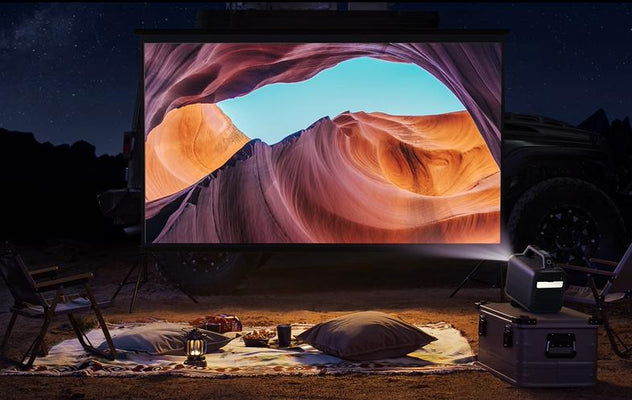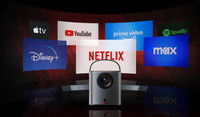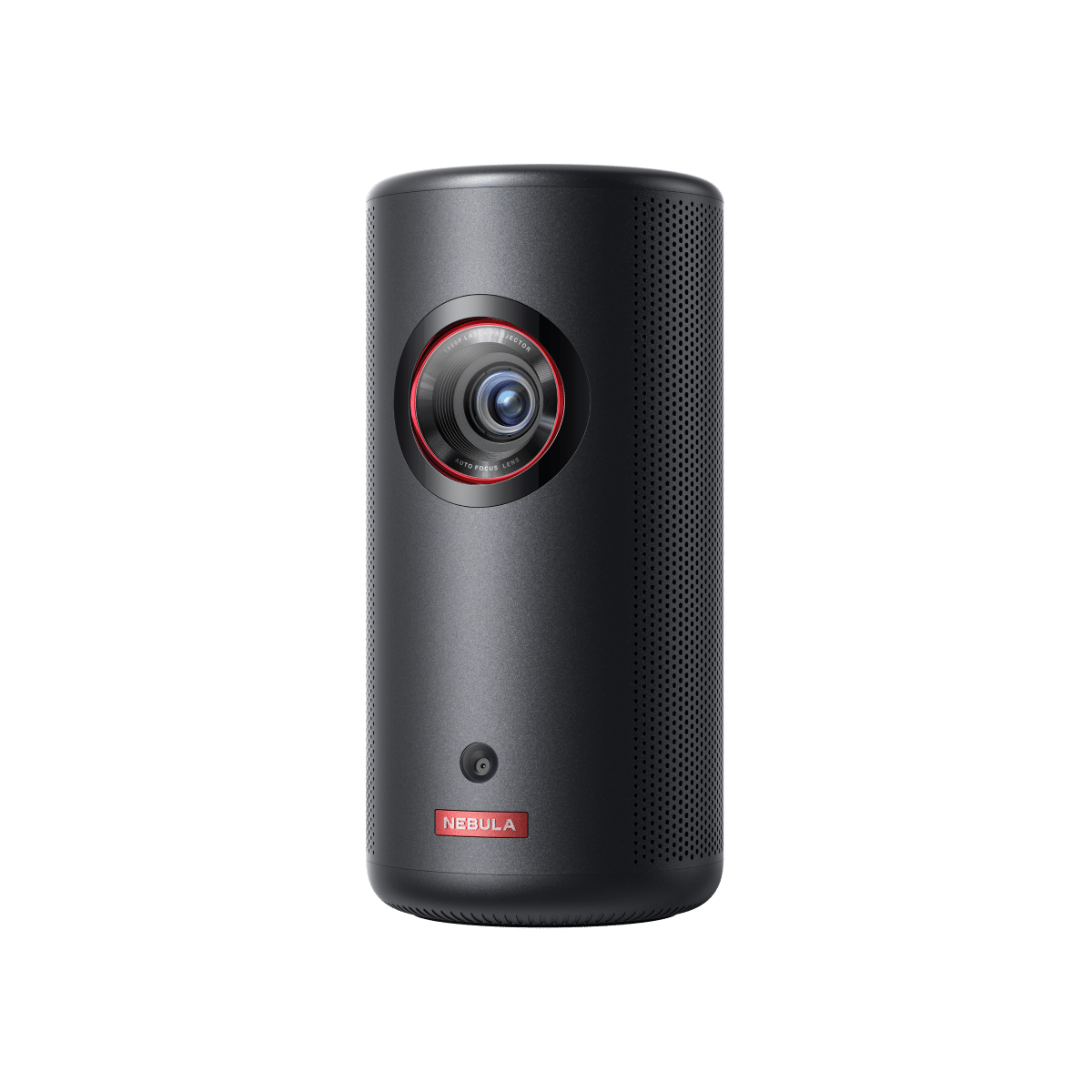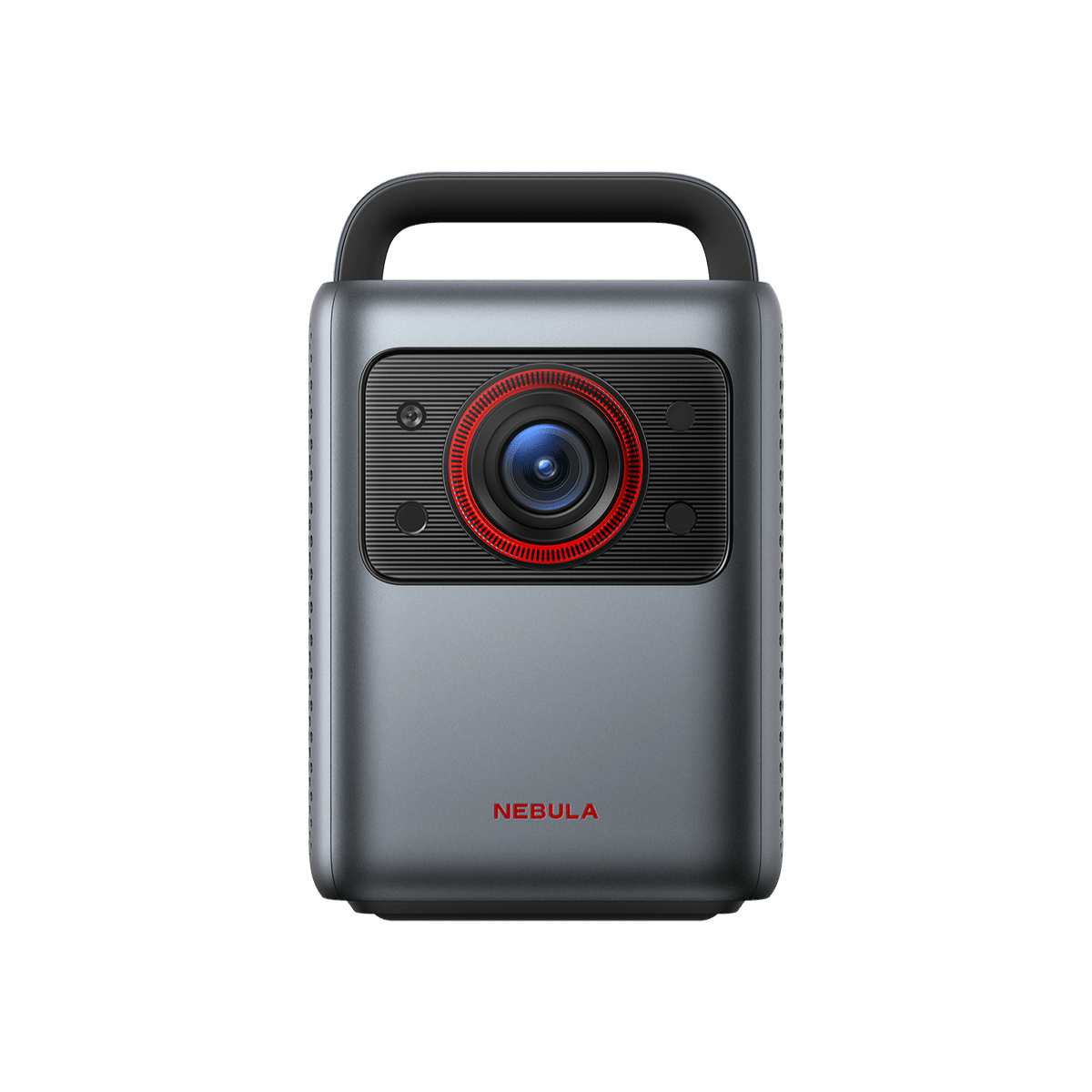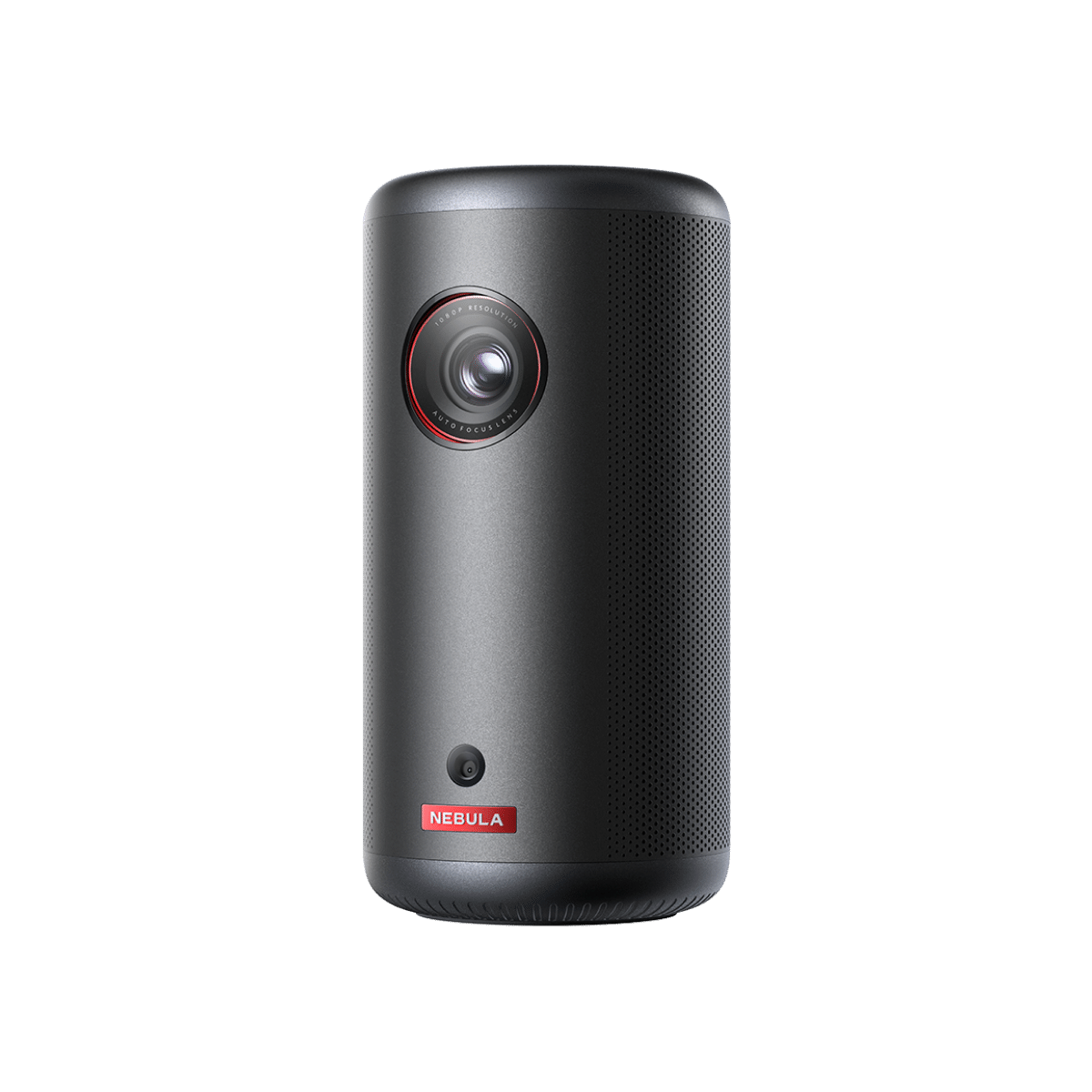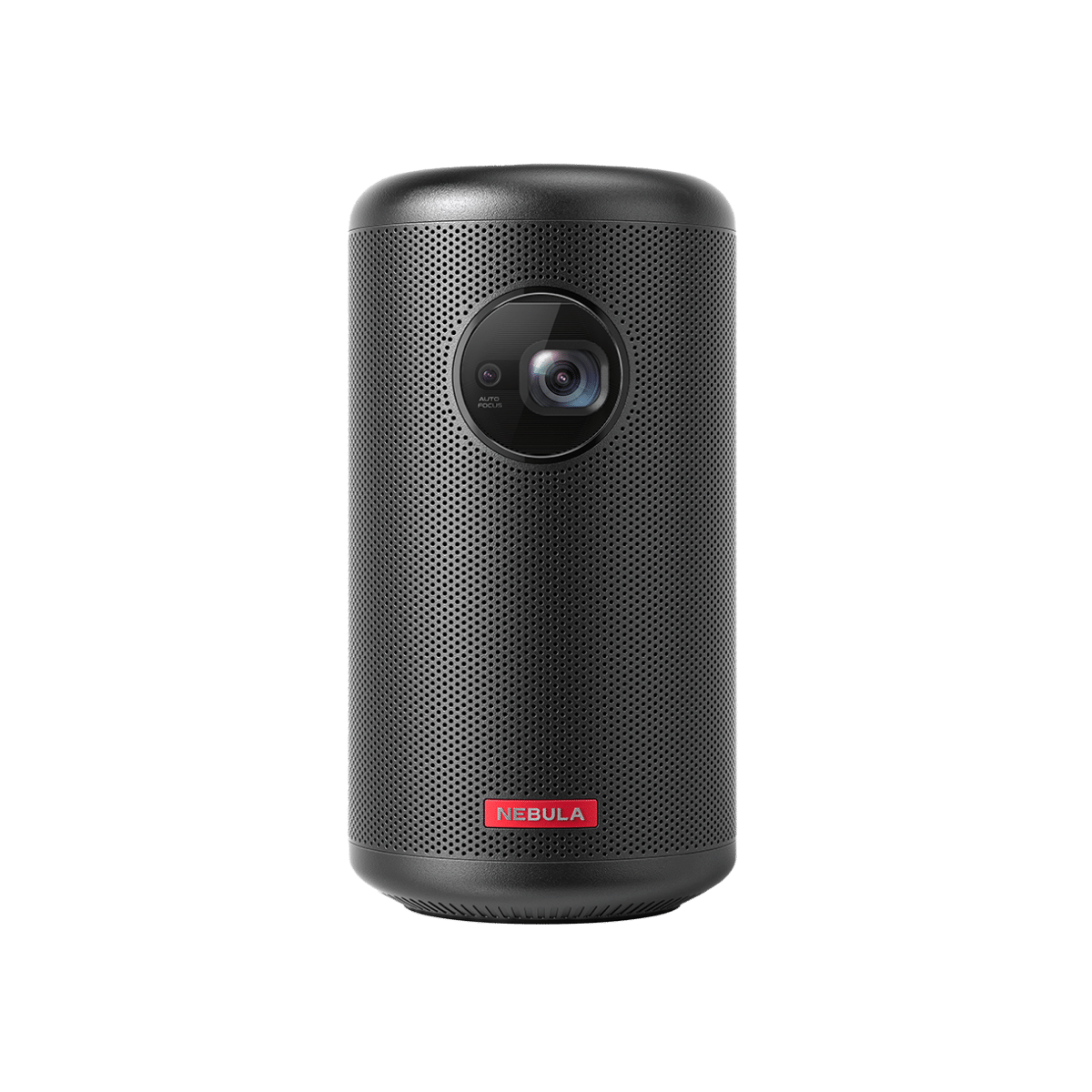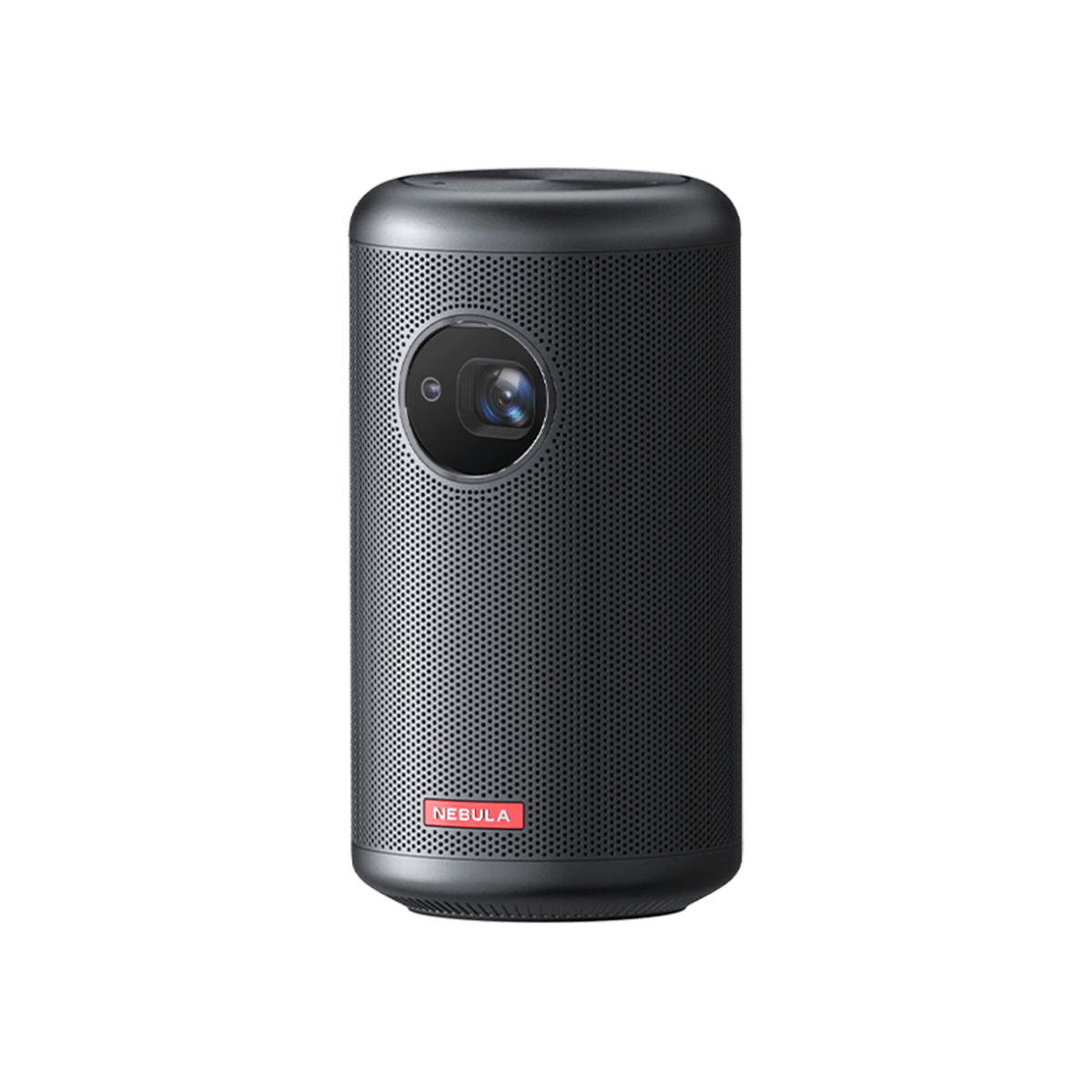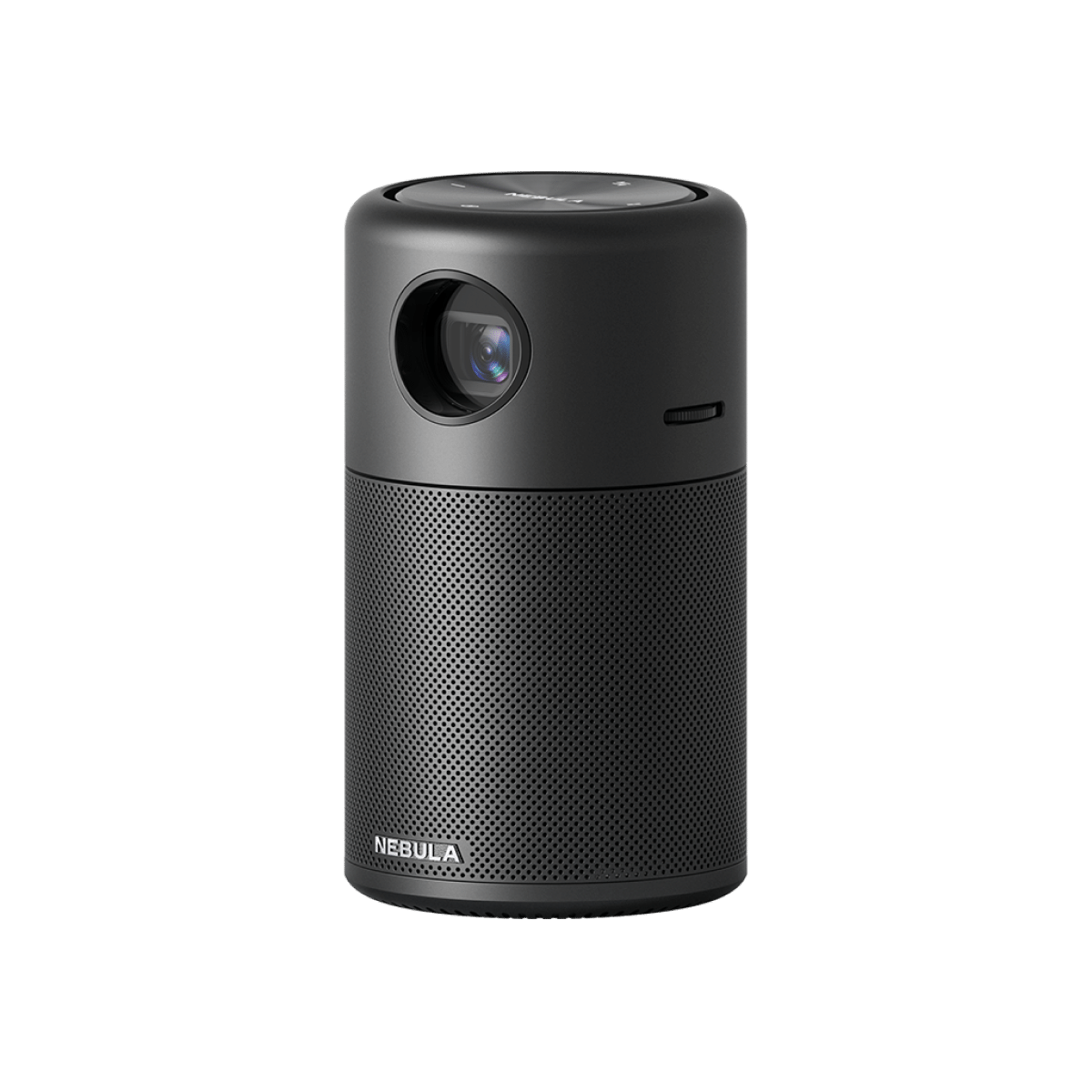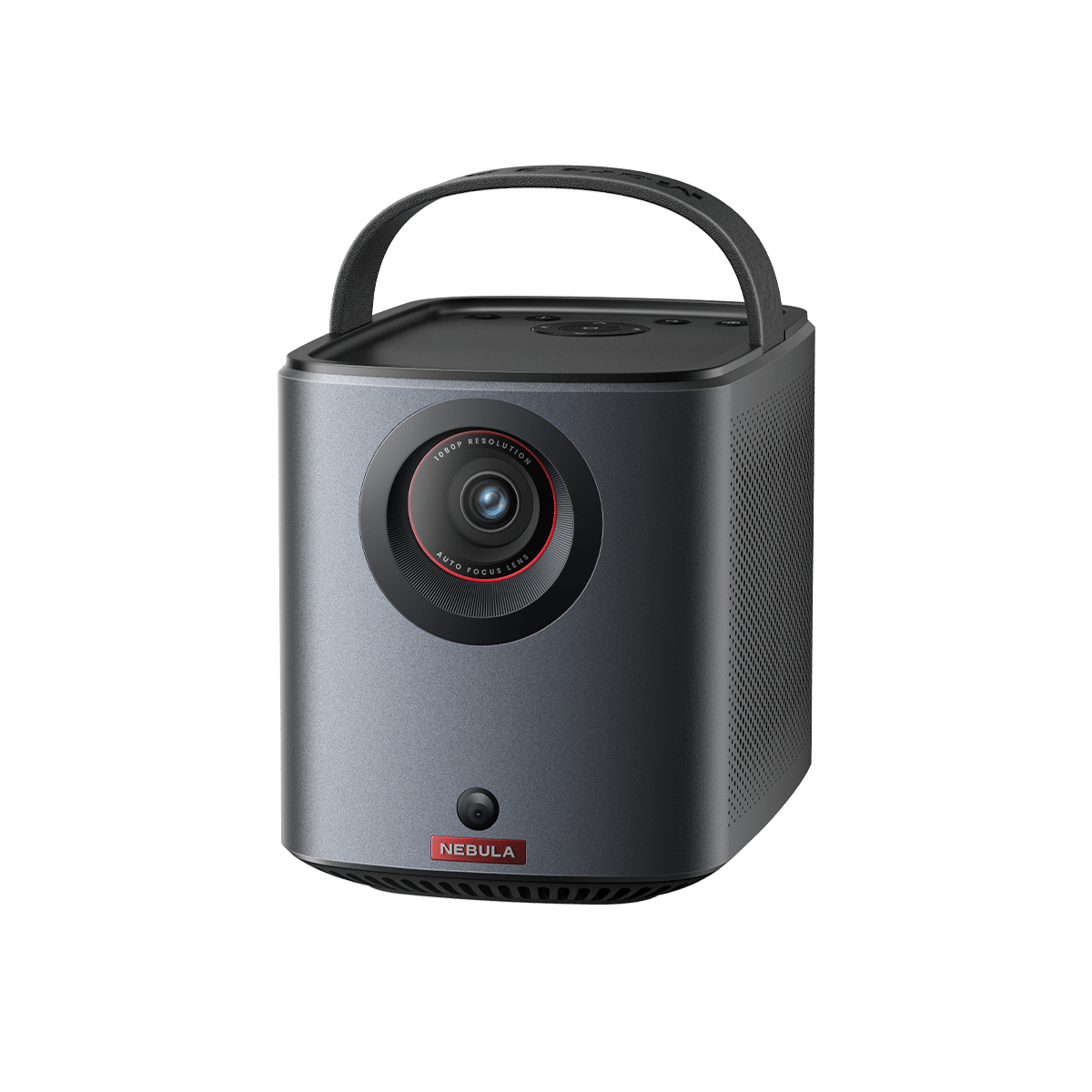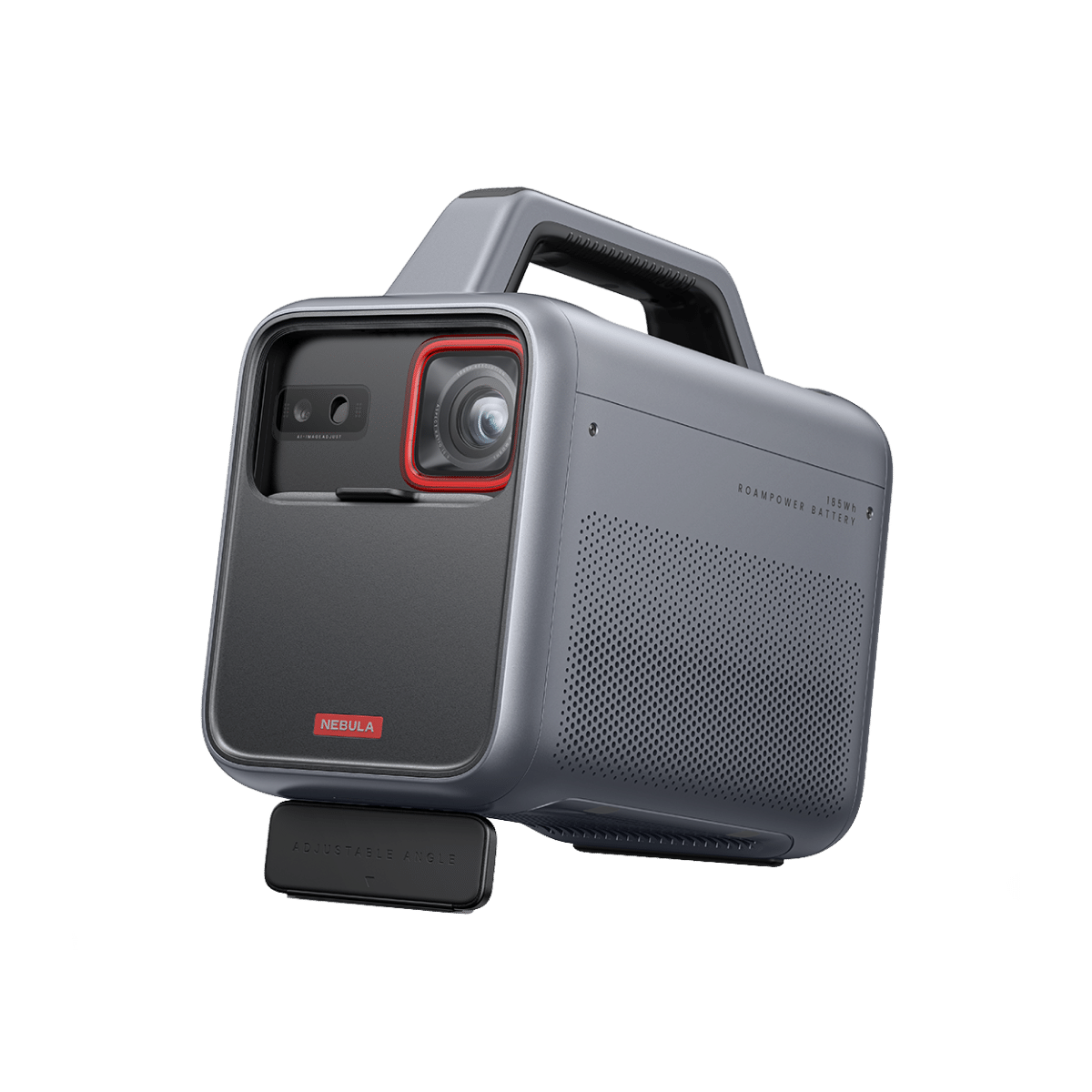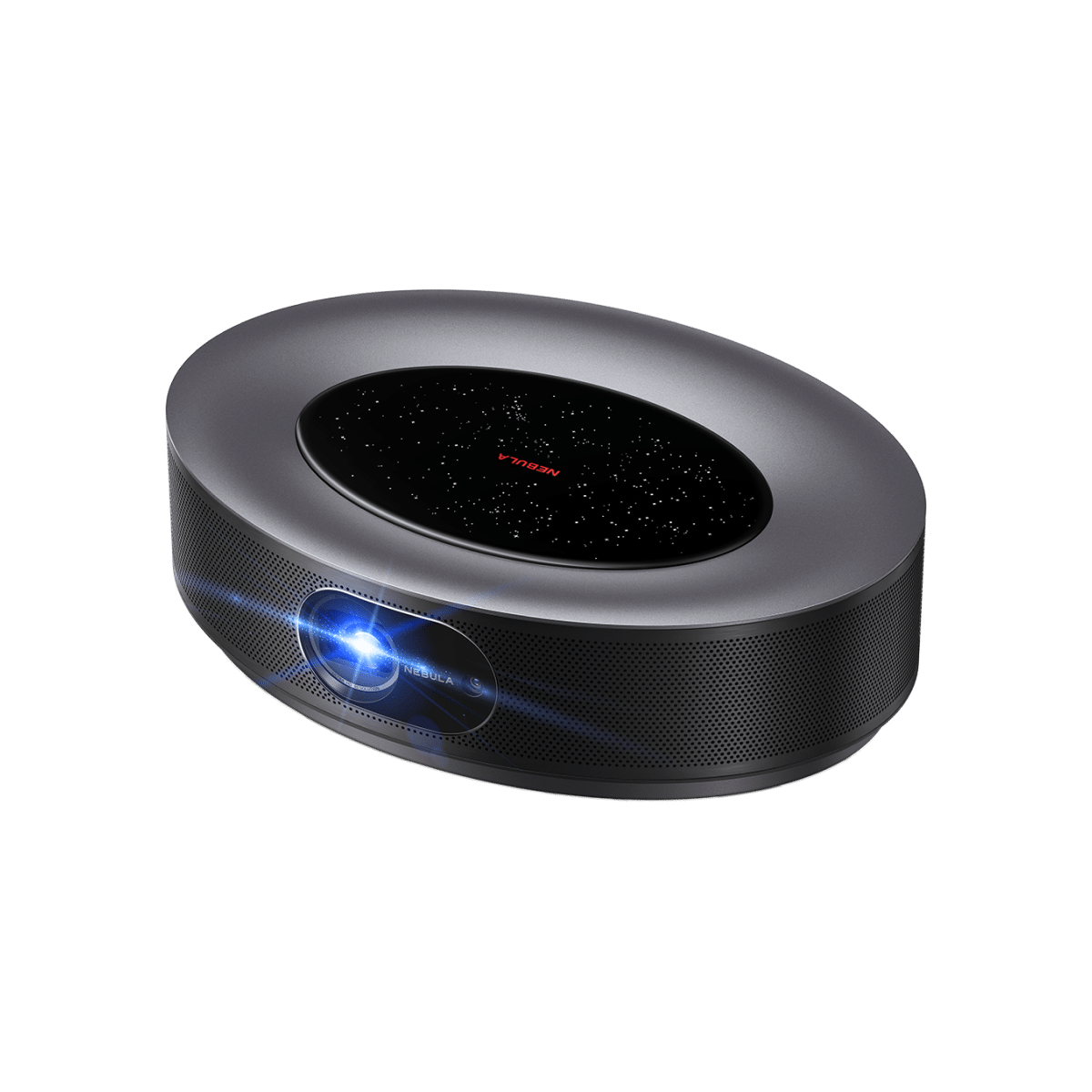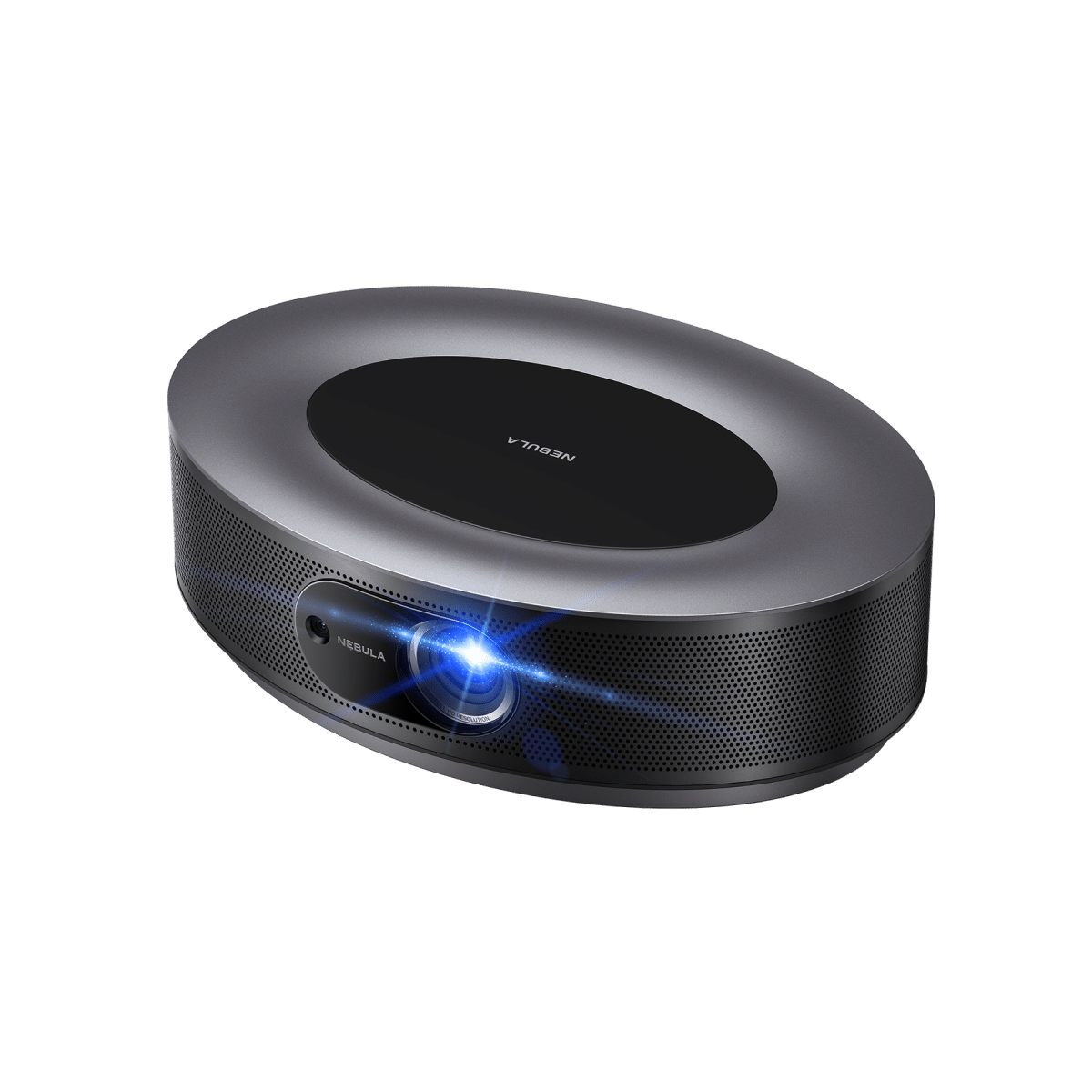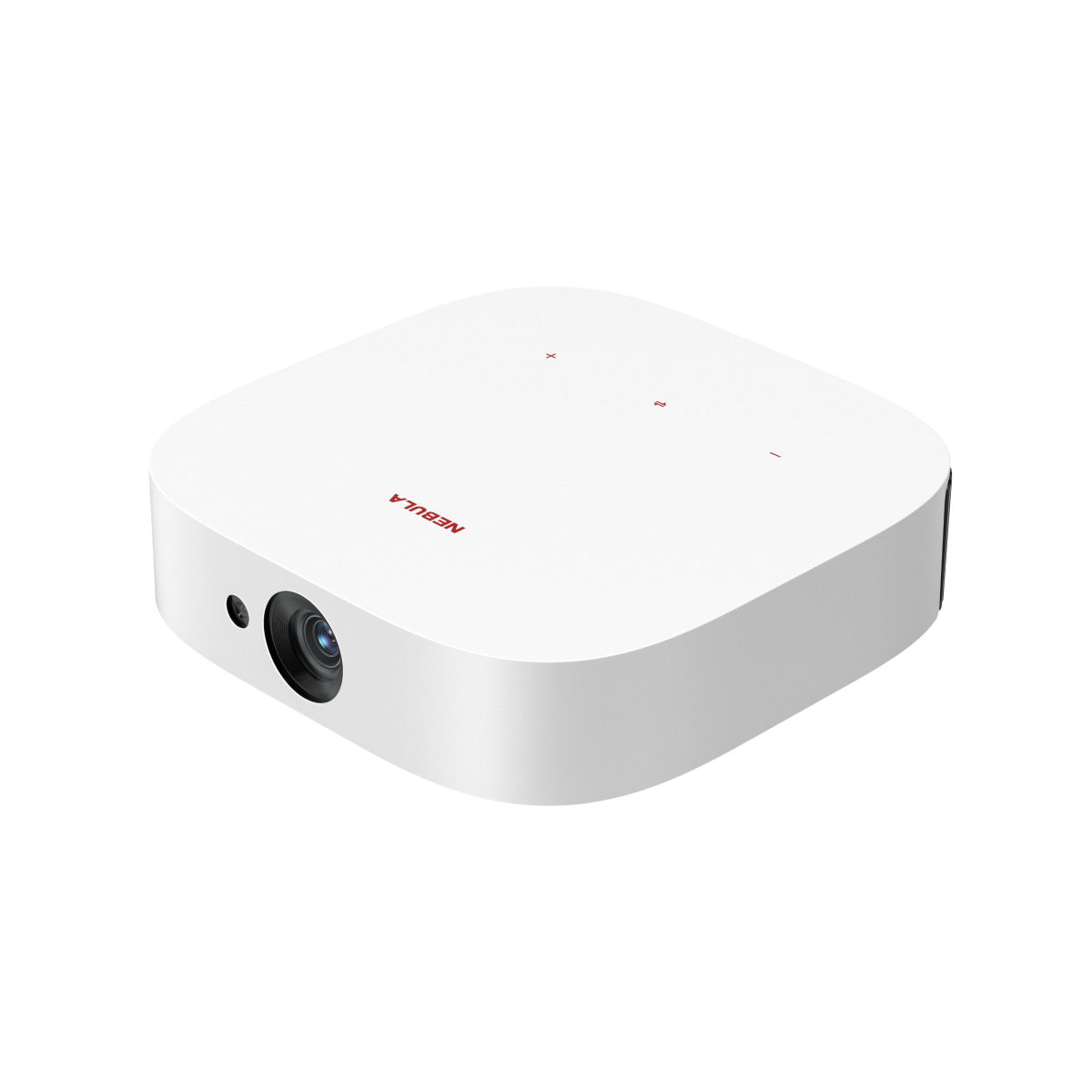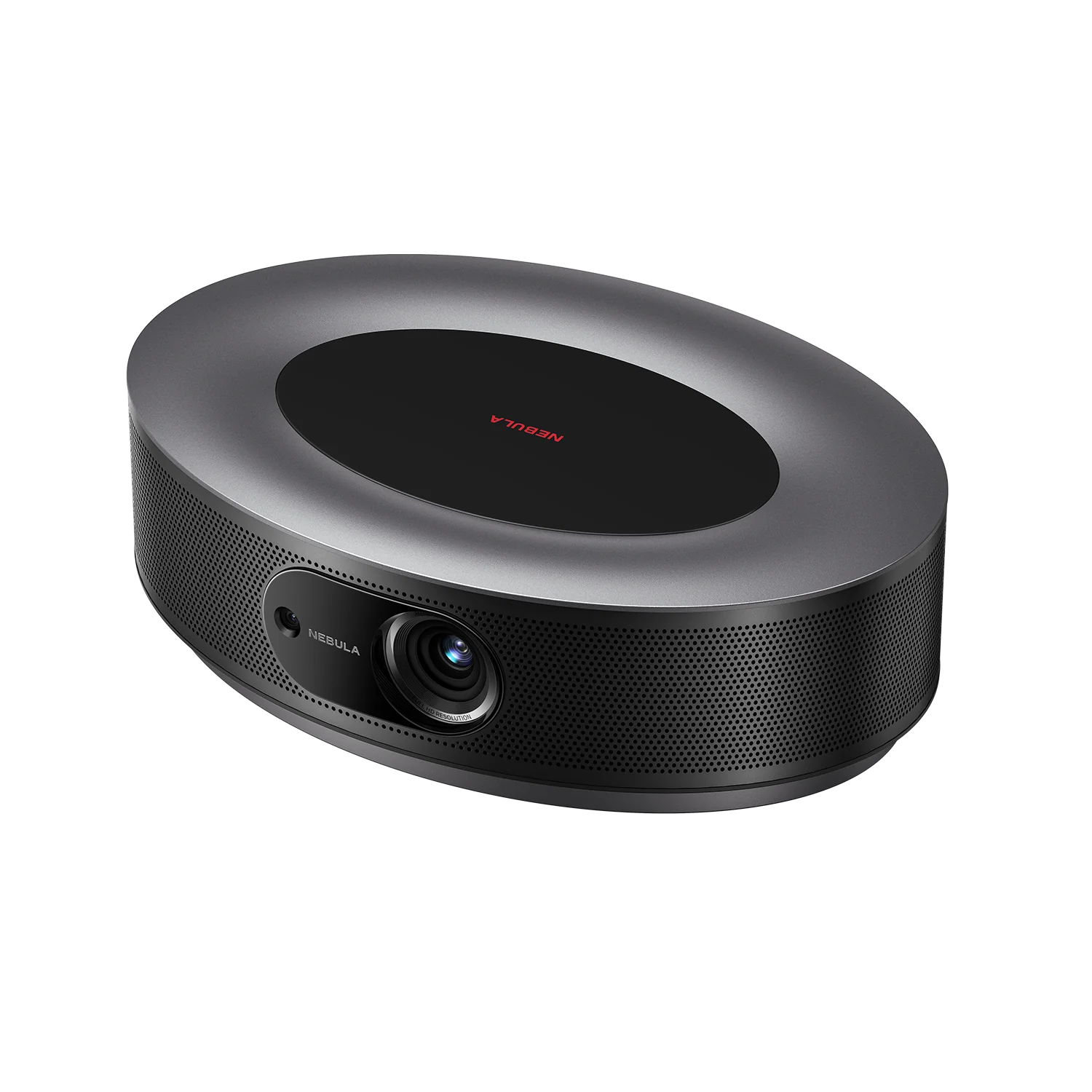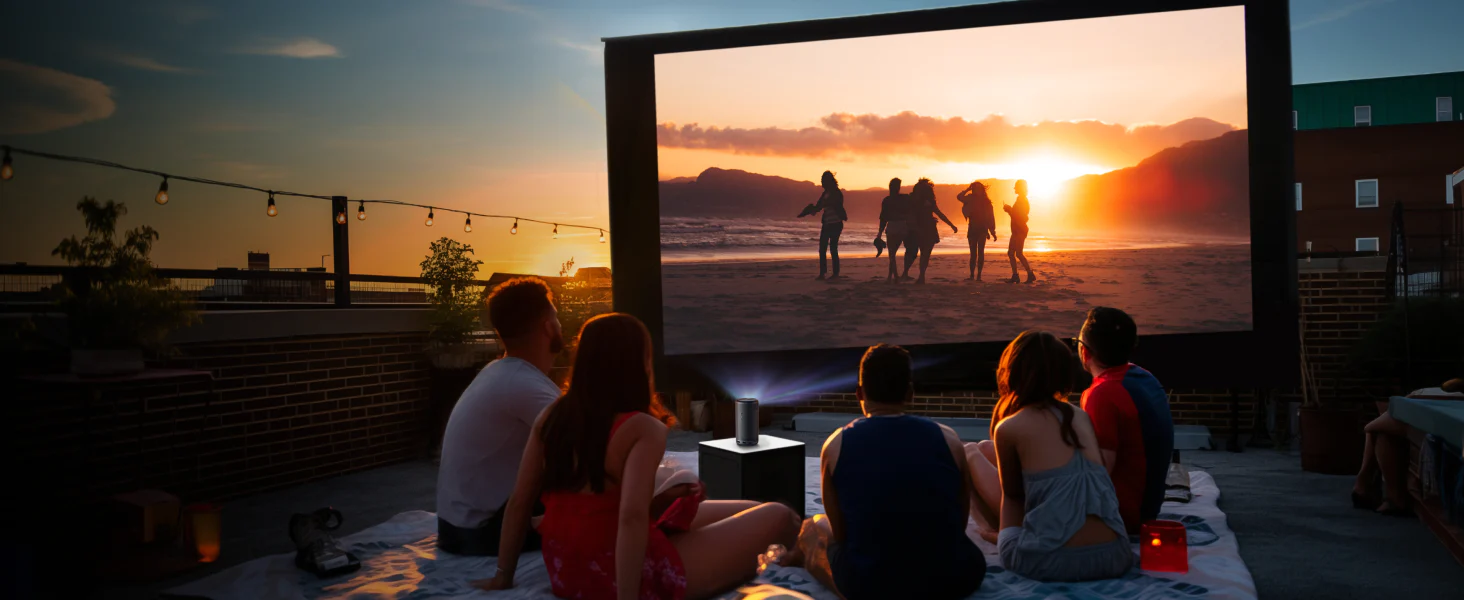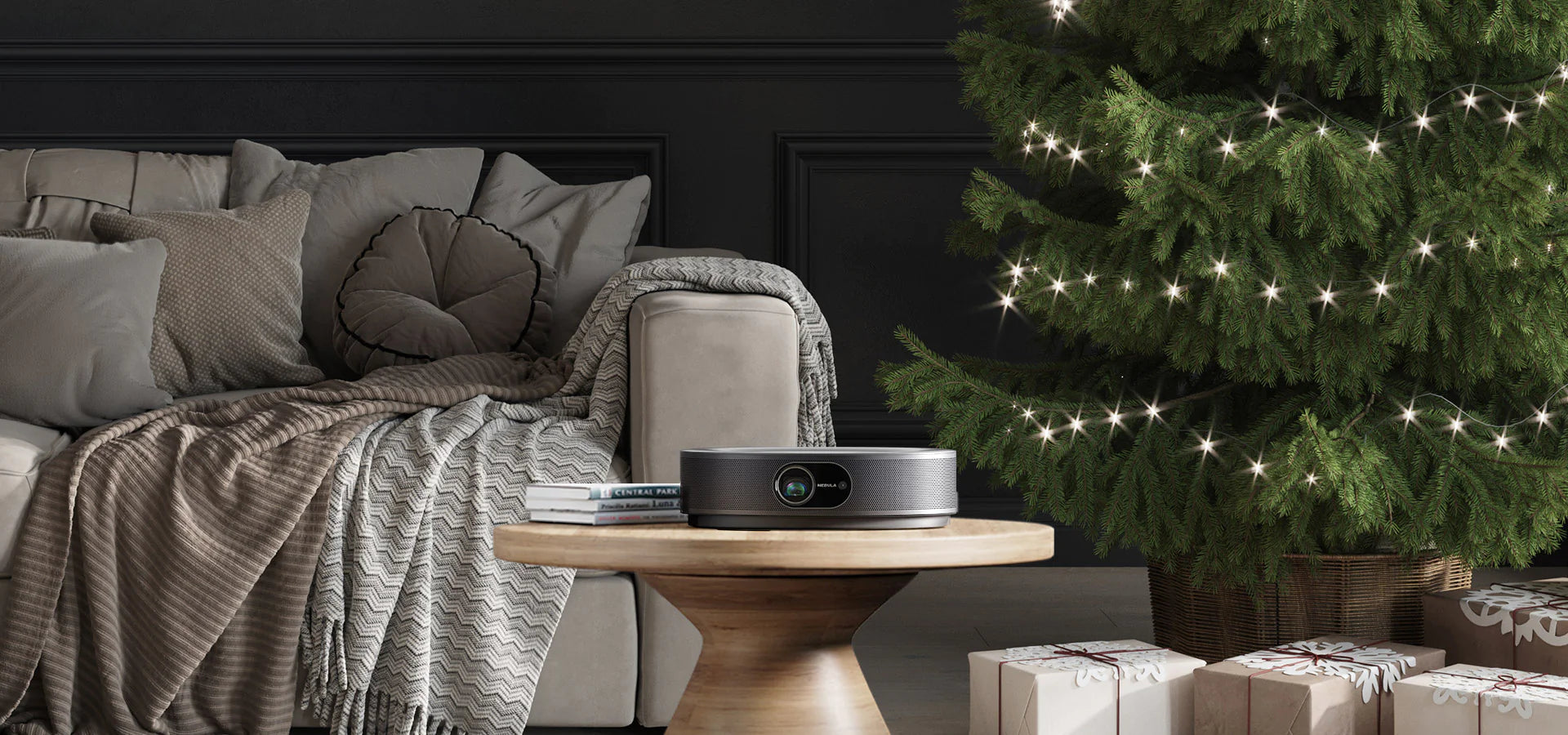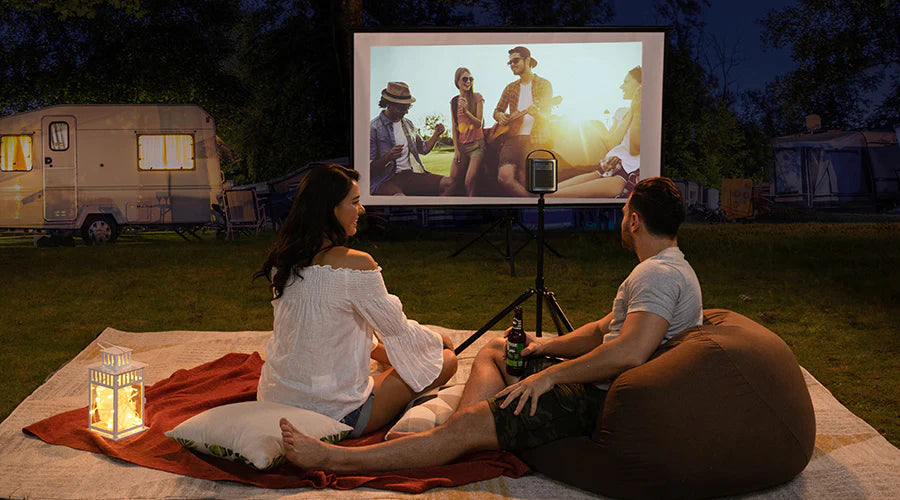How to select · 03/12/2023
Best 1080p Projector: Top Picks and Buying Guide
Projectors can now be found in our living rooms, backyards, and even our travel bags. But not all pixels are created equal. If you're aiming for that crisp, cinema-like experience, a 1080p projector is your ticket.
Whether it's movie night or game day, the best 1080p projector can transform ordinary walls into extraordinary experiences.
In the following sections, we'll illuminate the path to choosing the best 1080p projector for your needs, and spotlight some top contenders worth your attention.
Best 1080p Projectors
So you're in the market for a 1080p projector. Excellent choice. But with a sea of options, how do you pick the best one? Here, we'll spotlight some top-performing 1080p projectors that offer a blend of quality, features, and value.
Let's get underway.
1. Solar Portable Projector
Key Specs/Features:
Resolution: 1080p with HDR10
Brightness: 400 ANSI lumens
Audio: Dolby Digital Plus, dual 3W speakers
Battery Life: Up to 3 hours on a single charge
Connectivity: Android TV 9, supports over 5,000 apps
Adjustability: Built-in stand, 13-degree angle adjustment
The Solar Portable projector is revolutionary in the array of the best 1080p projectors. If you're after cinematic visuals, this device delivers up to 120 inches of high-definition entertainment. It's not just about the visuals; the audio is equally compelling. With Dolby Digital Plus and dual 3W speakers, we ensure a decent auditory experience.
One of its standout features is its built-in rechargeable battery, offering up to 3 hours of uninterrupted viewing. This makes it a strong contender for the title of best portable projector 1080p. The Android TV 9 platform opens up a universe of over 5,000 apps, from YouTube to Hulu, making it a versatile choice for all your entertainment needs.
We've prioritized ease of use. The built-in stand allows for a 13-degree angle adjustment. If you're in the market for a best budget 1080p projector that offers both quality and flexibility, the Solar Portable projector should be at the top of your list. It performs exceptionally well in dimmer environments and could easily be the best 1080p projector under 500.
In a nutshell: While this may be the cheapest 1080p projector on this list, the Solar Portable projector offers top-notch visuals, powerful audio, and unmatched portability. A solid pick for anyone looking to elevate their viewing experience.
2. Cosmos Laser 1080p Projector
Key Specs/Features:
Resolution: 1080p HD
Brightness: 1,840 ANSI Lumens
Setup: Intelligent Environment Adaptation (IEA) Technology
Portability: Ergonomic handle for easy movement
Audio: AiFi technology, 10W full-range speakers
Connectivity: Android TV 10.0, supports 7,000+ apps
With a staggering 1,840 ANSI Lumens, the Cosmos Laser 1080p projector is so bright you can keep the lights on and still enjoy a vivid viewing experience. The 1080p HD resolution ensures that every pixel is crisp and clear.
What sets our projector apart is the Intelligent Environment Adaptation (IEA) Technology. It intelligently scans and adjusts to your room's conditions, optimizing screen size and orientation. Achieve a flawless theater setup swiftly without any hassle. Portability is another strong suit. The ergonomic handle makes it easy to carry the projector from your living room to your bedroom or even the backyard.
Audio quality is not compromised. The AiFi technology uses a unique algorithm to optimize the 10W full-range speakers, delivering a 3D soundscape that's rich and immersive. You'll feel every whisper and explosion as if you're part of the action. Moreover, with the Android TV 10.0 platform, dive into a vast library of over 400,000 movies and episodes spread across 7,000+ apps.
In summary: the Cosmos Laser 1080p projector offers a blend of high-quality visuals, easy setup, portability, and immersive audio. It's a top pick for anyone looking for a comprehensive home theater experience.
3. Epson Home Cinema 2040 1080p 3D 3LCD Projector
Key Specs/Features:
Resolution: 1080p (1920 x 1080)
Brightness: 2500 lumens
Projection System: 3LCD, 3-chip technology
22 (Zoom: Wide) – 1.47 (Zoom: Tele)
Speaker: 5 W Mono
The Epson Home Cinema 2040 projector is an impressive addition to the home theater arsenal, offering a cinematic experience in the comfort of your living space. This projector boasts Full HD 1080p resolution, ensuring every scene is captured in pristine detail. What sets it apart from competitors is its 3x Higher Color Brightness, thanks to the proprietary Epson 3LCD technology. This, combined with a dynamic contrast ratio of 35,000:1 and 2200 lumens for both color and white brightness, guarantees vibrant, true-to-life images that will captivate any audience.
Ease of use is evident in the Home Cinema 2040's design. With two HDMI ports and MHL connectivity, integrating your favorite devices, be it a Blu-ray Disc player, gaming console, or streaming gadget, is seamless. Its potential to project up to a massive 300" display, coupled with a built-in speaker, ensures that your viewing experience is immersive right out of the box. Moreover, its portable nature allows for flexibility, ideal for those on the move or those who frequently switch viewing environments.
In summary: the Epson Home Cinema 2040 projector is a blend of performance and convenience. Whether you're diving into intense 3D adventures, enjoying a movie night, or gaming in high definition, this projector promises an unparalleled viewing experience.
4. ViewSonic X2 1080p Short Throw Projector
Key Specs/Features:
Price: $943.35
Resolution: Full HD (1920x1080)
Brightness: 2300 ANSI lumens
Color: Cinema SuperColor technology, 125% Rec. 709
Audio: Dual Harman Kardon Bluetooth speakers
Setup: 1.2x optical zoom, keystone correction, 4-corner adjustment
Streaming: Compatible with dongles for Netflix, Disney+, etc.
Connectivity: Wi-Fi, Bluetooth, HDMI, USB-C
The ViewSonic X2 1080p Short Throw Projector is a versatile choice for those looking for a blend of quality and convenience. Priced at $943.35, it offers Full HD resolution and a bright 2300 ANSI lumens display, making it a strong contender in the best 1080p projector category.
Color reproduction is top-notch, thanks to Cinema SuperColor technology and a 125% Rec. 709 wide color gamut. This ensures lifelike colors that pop, whether you're watching a movie or playing a game.
Audio is another highlight. The internal Dual Bluetooth speakers from Harman Kardon provide engulfing room-filling sound, eliminating the need for external speakers.
Setup is straightforward with features like 1.2x 4-corner adjustment, optical zoom, and vertical/horizontal keystone correction. This flexibility makes it a good fit for various room sizes and setups.
Streaming is simplified; just add a dongle (not included) to stream live sports or binge-watch shows on platforms like Netflix and Disney+. The projector supports a wide range of inputs, including Wi-Fi, Bluetooth, HDMI, and USB-C, making it compatible with the majority of mobile devices, PCs, and Macs, and media players.
In summary: the ViewSonic X2 offers a well-rounded package of features for its price point. If you're looking for a high-quality, easy-to-set-up projector with excellent connectivity options, this is a solid pick.
5. BenQ HT2060 1080p HDR LED Home Theater Projector
Key Specs/Features:
Price: $999
Color Performance: LED with DCI-P3 and 98% Rec.709 coverage
Contrast: HDR10 and HLG compatible
Connectivity: Dual HDMI 2.0, S/PDIF for 5.1 channel audio
Latency: 16.7ms at 1080p 60Hz, 33.4ms at 4K 60Hz
Audio: Built-in 5Wx2 chambered speakers
Installation: Vertical lens shift, 2D Keystone, 1.3x zoom
Warranty: 3-year limited labor and parts warranty
The BenQ HT2060 is a compelling choice for those seeking a high-quality 1080p HDR LED projector without breaking the bank. Priced at $999, it offers a robust set of features that make it a standout in the best 1080p projector under 500 category.
Color performance is a highlight, thanks to its LED technology that provides rich DCI-P3 and 98% Rec.709 color coverage. The high contrast, compatible with HDR10 and HLG, ensures that dark scenes are finely detailed.
Connectivity is universal, with dual HDMI 2.0 ports and S/PDIF support for 5.1 channel audio out. Gamers will appreciate the low latency—16.7ms at 1080p 60Hz and 33.4ms at 4K 60Hz—making for smooth gameplay.
Audio quality is not compromised, with built-in 5Wx2 chambered speakers designed to fit the projector's placement and direction. Installation is hassle-free, offering vertical lens shift, 2D Keystone, and 1.3x zoom.
The 3-year limited labor and parts warranty adds an extra layer of confidence, making it a reliable choice for long-term use.
In summary: the BenQ HT2060 offers a well-rounded package of features that make it a top pick for those looking for quality, flexibility, and reliability in a 1080p projector.
What to Look For in a 1080p Projector
Before you make a purchase, it's important to understand what features to look for in a 1080p projector. This section will guide you through key aspects like brightness, contrast ratio, and more, ensuring you make the right choice.
Check Lumens for Brightness
Measured in lumens, it dictates how well you'll see the projected image in various lighting conditions. A higher lumen count means a brighter image. For indoor settings with controlled lighting, 1,500 to 3,000 lumens should suffice.
If you're planning to use the projector outdoors or in well-lit rooms, aim for 3,000 lumens or more. Always remember, brighter isn't always better. Too much brightness can wash out the image.
Inspect Contrast Ratio
Contrast ratio is the difference between the darkest and brightest parts of the image. A higher contrast ratio offers deeper blacks and more vibrant colors.
However, this spec can be misleading as manufacturers have different ways of measuring it. A good rule of thumb is to not solely rely on the contrast ratio but to also see the projector in action. For most uses, a contrast ratio of at least 1,500:1 is recommended.
Verify Resolution
Resolution is the number of pixels that make up the image. For a 1080p projector, you're looking at a resolution of 1920x1080 pixels. This is ideal for HD content and should be your baseline. Lower resolutions may save you money but will compromise image quality.
Always check that the projector supports true 1080p resolution and not just "supports HD content," as the latter can be misleading.
Assess Lens Quality
The lens is the eye of the projector. A high-quality lens ensures that the image is sharp and clear. Glass lenses are generally superior to plastic ones, providing better clarity and less distortion.
Some projectors come with zoom and focus capabilities, allowing you to adjust the image size and sharpness without moving the projector. Lens shift features can also be beneficial for adjusting the image vertically or horizontally, providing more flexibility in projector placement.
Evaluate Throw Distance
Throw distance is the distance between the projector and the screen. Short-throw projectors are ideal for smaller rooms, as they can project a large image from a short distance. Long-throw projectors are better suited for larger rooms.
It's essential to measure your space and compare it with the projector's specifications. Some projectors come with a throw distance calculator, a handy tool for determining the optimal distance for your setup.
Examine Connectivity
Most 1080p projectors come with a variety of ports such as HDMI, USB, and VGA. Some even offer wireless connectivity options like Bluetooth and Wi-Fi.
Check if the projector supports the devices you plan to connect, be it a laptop, gaming console, or streaming device. The more versatile the connectivity options, the more utility you'll get out of your projector.
Test Built-in Speakers
While built-in speakers are generally not the best in terms of audio quality, they can be convenient for portable or temporary setups. Check the wattage of the built-in speakers; higher wattage usually means louder and clearer sound.
However, for a home theater experience, it's advisable to invest in an external sound system. Some projectors come with an audio-out port, allowing you to connect to external speakers or a sound system.
Consider Portability
Portability might not be the first thing on your mind when shopping for a projector, but it's an important factor if you plan to move it around. Some projectors are compact and lightweight, making them easy to carry from room to room or even outside for a movie night under the stars.
Look for features like a carrying case or built-in handle. Also, check the dimensions and weight specifications to ensure it fits your mobility needs.
Check Lamp Life
The lamp is the heart of your projector, and its lifespan can significantly impact long-term costs. Lamps can last anywhere from 2,000 to 5,000 hours, depending on the model and usage. Some projectors have eco-modes that extend lamp life but may reduce brightness.
Always check the manufacturer's specifications for lamp life and consider the cost and availability of replacement lamps.
Review Warranty
A warranty is your safety net. Most projectors come with a one-year warranty, but some offer extended coverage. The warranty usually covers parts and labor for repairs but may not cover the lamp or other consumables.
Some manufacturers offer a "dead-pixel" policy, replacing the unit if even one pixel is faulty. Always read the fine print to know what's covered and what's not, and consider purchasing an extended warranty for peace of mind.
Conclusion
With this knowledge in hand, you're now prepared to choose the best 1080p projector for your unique needs.
Whether you're a movie buff, a gaming enthusiast, or someone who wants to take presentations to the next level, a 1080p projector is your ticket to a larger-than-life experience.
Take note, the specifications of the best 1080p projector are important, but so are how well they fit your demands and way of life.
FAQ
Can I play 4K content through a 1080p projector?
Yes, you can play 4K content through a 1080p projector, but the projector will downscale the resolution to fit its 1080p capabilities. This means you won't get the full 4K experience, but the image quality will still be quite good. Most modern 1080p projectors come with built-in software that automatically adjusts the resolution of higher-quality content to match the projector's native resolution. So, while you won't get 4K quality, you'll still enjoy a high-definition viewing experience.
Is 1080p good for home theater?
Of course. A 1080p projector offers high-definition resolution that is more than sufficient for a home theater setup. With 1920x1080 pixels, you get crisp, clear images that bring movies and games to life. While 4K projectors offer even higher resolution, they also come with a steeper price tag. For most home theater needs, a 1080p projector provides a great balance between quality and cost. It's a popular choice for those who want a high-quality viewing experience without breaking the bank.
